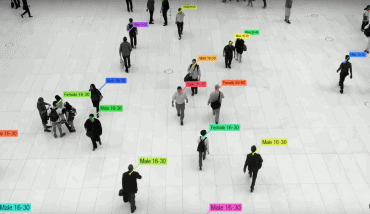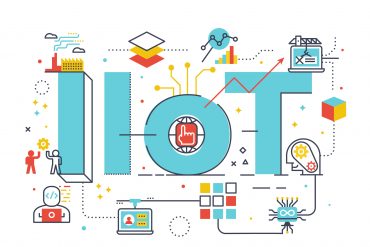
The industrial IoT has opened up new business models.
In the second of this two-part interview, Dr. Richard Soley of the Industrial Internet Consortium (IIC) explains the benefits that some businesses have seen with industrial IoT projects and innovations in the field. (For part one of this interview, which addresses the need for semantic IoT standards, click here.)
RT Insights: What kind of benefits are enterprises seeing at this point with IoT?
Soley: The greatest benefit that enterprises see is in increased productivity, primarily delivered through data analysis based on past systems use, leading to predictive maintenance. For example, Envision Energy is one of the world’s ten largest wind turbine companies and the largest Chinese offshore wind turbine supplier. The company realized that there are measurable business benefits in analyzing turbine sensor its network of 20,000 wind turbines with greater granularity. So, they moved from analyzing turbine data every 10 minutes to every minute, and then on to every few seconds. They turned to IIC member ParSteam to immediately analyze real-time sensor data from their wind turbines. Envision is able to quickly identify actionable insights with significant business benefits to deliver an data from overall 15 percent improvement in productivity.
PrismTech [an Object Management Group member] was selected to provide the information backbone, based on OMG’s Data Distribution Service standard, for the City of Nice’s Connected Boulevard Project. This project focuses on developing green transportation and reducing the negative consequences of urban activity on the City’s citizens. Already the City of Nice and its residents are seeing real benefits. By having real-time access to parking space availability data via mobile devices, drivers are taking much less time to park and parking income from reduced fraud is up by 35 percent. This in turn is helping improve traffic flow and has reduced congestion by 30 percent. Air pollution and noise levels have been reduced by 25 percent. In the future better city management will see savings of between 20-80 percent in areas such as street lighting and waste management while improving overall environmental quality.
RT Insights: Are most IoT instances real-time? Is IoT paving the way for real-time data streaming across the board?
Soley: There’s no reason that IoT solutions must be real-time; after all, historical data can be assessed and reviewed at any time looking for new business opportunities or simply opportunities to optimize existing operations. That said, hospitals are already benefitting from intelligent equipment that streams real-time data to improve patient wait and bed turnover times. Sensor-embedded medicine, such as pills or smart sutures that detect infection, is being introduced to time-stamp and report the effects of medication or therapies. Future scenarios include patient-centered medical home care that uses ultrasound to monitor activity in the home, to detect falls and trigger automatic ambulatory services, or improved equipment efficiency that eliminates multiple device logins and adjusts user settings to help reduce risk, eliminate errors and provide a much better patient experience overall. There’s also auto-routing of patient information to find the right doctor, eliminating the need for a doctor to track down tests.
RT Insights: Has IoT opened up new business models? Is it catalyzing new ways to think about business?
Soley: As is true with all open, well-adopted standards, the Internet of Things has created opportunities for new open markets that were once proprietary. IoT is building a better future for society by helping to launch new markets with innovative products and processes that are evolving from opportunities to measure, monitor, analyze and collaborate in ways never before imagined. At the same time, the IoT is disrupting existing business models with new technologies developed daily, especially in the Industrial IoT field which combines industrial machines with data-driven analytics to better understand business processes, reduce unplanned downtime, and increase profitability and efficiency.
The ability of manufacturers to keep long-term connectivity with the products they build and thus provide better service has created entirely new business models, operationally-oriented rather than capital-oriented, and provide their manufactured products “as a service,” to reuse a cloud computing term. Jet engine manufacturer and OMG and Industrial Internet Consortium (IIC) member General Electric, for example, is now happy to lease its jet engines on a propulsion-as-a-service basis, taking advantage of their vast amount of historical performance data to keep the engine running in tip-top condition.
RT Insights: Are there business innovations now evident with IoT that weren’t conceivable even a few years ago?
Soley: The IoT Solutions World conference held in June, had six focused tracks — energy, healthcare, innovation, manufacturing, technology and transportation – that featured global leaders who are already executing Industrial IoT solutions today. Examples include a smart building that Schneider Electric collaborated on, wearable technology that Massachusetts General Hospital is using to monitor research patients’ stress levels, or a car that was designed via crowd sourcing and was created using 3D printing in less than 24 hours. Planning is underway for next year’s conference in Barcelona in October of 2016, which I expect will raise the bar for transformative IoT solutions.
RT Insights: What are the security issues that are arising with IoT, and how can these be addressed?
Soley: Security is definitely a major issue, when you recall all of the breaches that took place last year when data was accessed without authorization or malicious code introduced. IIoT in particular is vulnerable as an increasing number of machines and processes go online, exposing the data collected and shared to the wider Internet. That’s why the Industrial Internet Consortium formed a Security Working Group to develop a common security framework and a rigorous methodology to assess security in industrial internet systems. The framework will describe the consequences in security terms of merging different security fields – such as industrial, information, controls, analytics and cloud.
Want more? Check out our most-read content:
White Paper: How to ‘Future-Proof’ a Streaming Analytics Platform
Research from Gartner: Real-Time Analytics with the Internet of Things
E-Book: How to Move to a Fast Data Architecture
The Value of Bringing Analytics to the Edge
Factory Testbed Focuses on Visualization
What’s Behind the Attraction to Apache Spark
Video: Loop AI Labs on How Cognitive Computing Understands Language
Liked this article? Share it with your colleagues!





























